

Perched on the lofty rock peak of Tehurangi I gazed down at the tranquil crater lake ensconced amongst the summit snowfields and lesser peaks of Mount Ruapehu. It was impossible to imagine the future fiery eruption that was to explode from the ice-bound pool. In the distance the pointed top of Mount Egmont protruded like an island from a vast sea of clouds while on my ascent there had been fine views across to the perfectly symmetrical cone of nearby Mount Ngauruhoe. This trinity of semi-active volcanoes provides the highest summits and best mountain walks on the North Island of New Zealand.
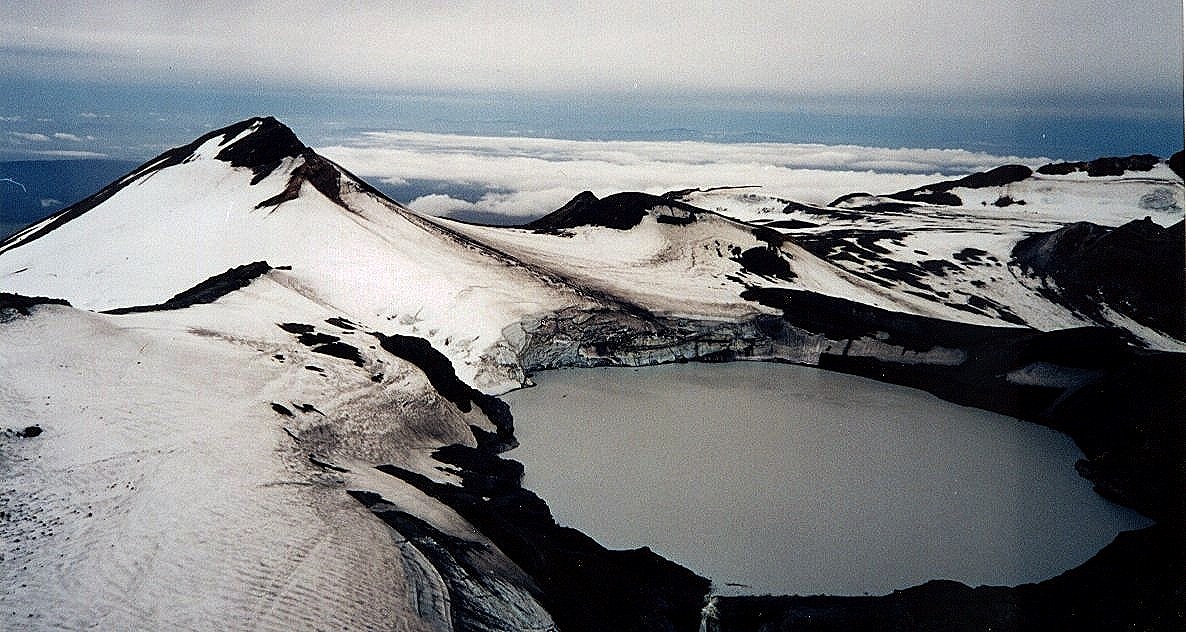 Summit
snowfields and crater lake
of Mt. Ruapehu |
During the peak summer and winter seasons mini-buses ply between Whakapapa in the centre of the Tongariro National Park and the ski-village of Ikiwiyi at the roadhead but in the present autumnal, off-season month of February there was no service. However the long trudge uphill on the hard, tarmac surface was alleviated by the increasingly fine outlook over the surrounding bush and grasslands. Nearing the end of the road the last of the scrub and grass petered out to leave an austere, primeval landscape of bleak, bare rock devoid of any vegetation.
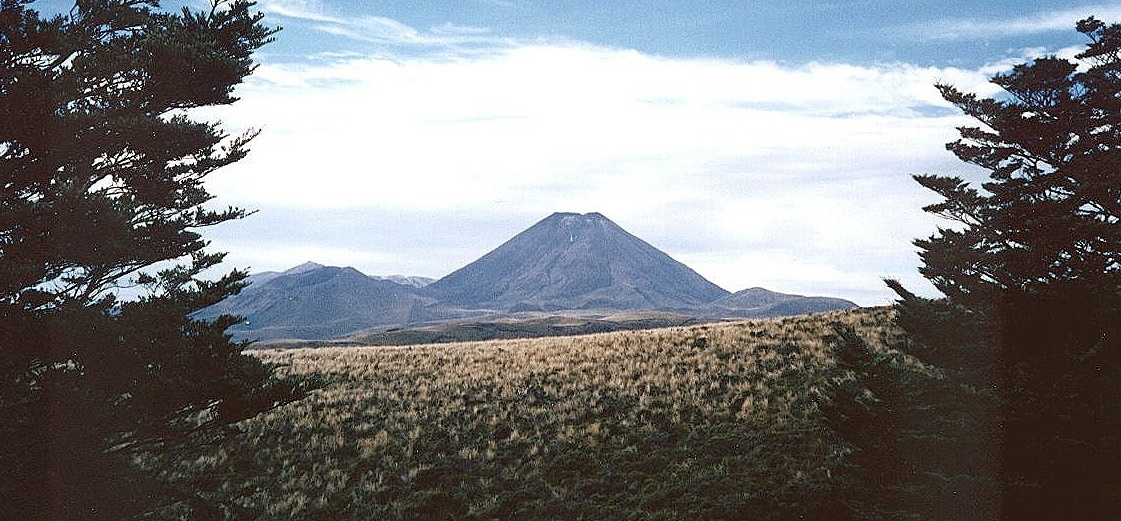 Mt.
Ngauruhoe
at start of ascent of Ruapehu |
From the deserted cluster of buildings of Ikiwiyi a set of painted poles marked the trail up a rough, shallow gully beneath the rusting cables of an abandoned ski-tow. A long, rising traverse round a hillside led up to smooth, polished rock surfaces formed by old lava flows interspersed with beds of soft, dusty volcanic ash. Beyond a jagged ridge loomed the dark, sinister cone of Ngauruhoe.
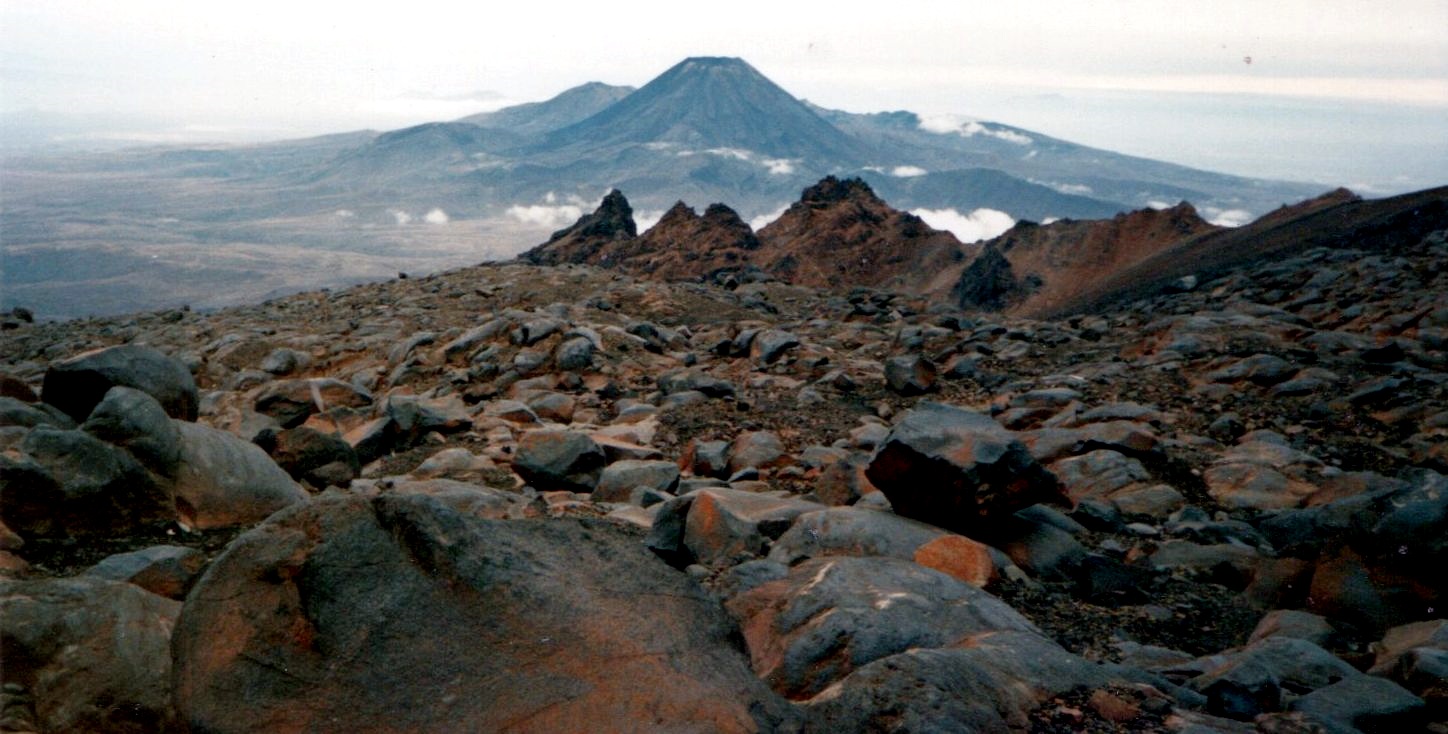 Mt.
Ngauruhoe
on ascent of Ruapehu |
Further up, a flatter stretch followed the edge of the dirt-blackened, fissured ice of the Whakapapa Glacier to steep scree falling from the rim of the North Crater. Skirting round the circumference of the broad, shallow, snow-filled depression I reached the small, wooden "Dome" emergency shelter on a promontory above the much deeper South Crater. Beyond an ice-bound crater lake, towering above sheer cliffs, was my objective of Tehurangi - the highest peak of Mt.Ruapehu.
The traverse of the sheet-ice, inner slopes of the crater that was now necessary would not have been possible without my crampons. Although their gradient was not great there was nothing to stop a slide down the smooth, slippery slopes into the potential deathtrap of the still, dark waters.
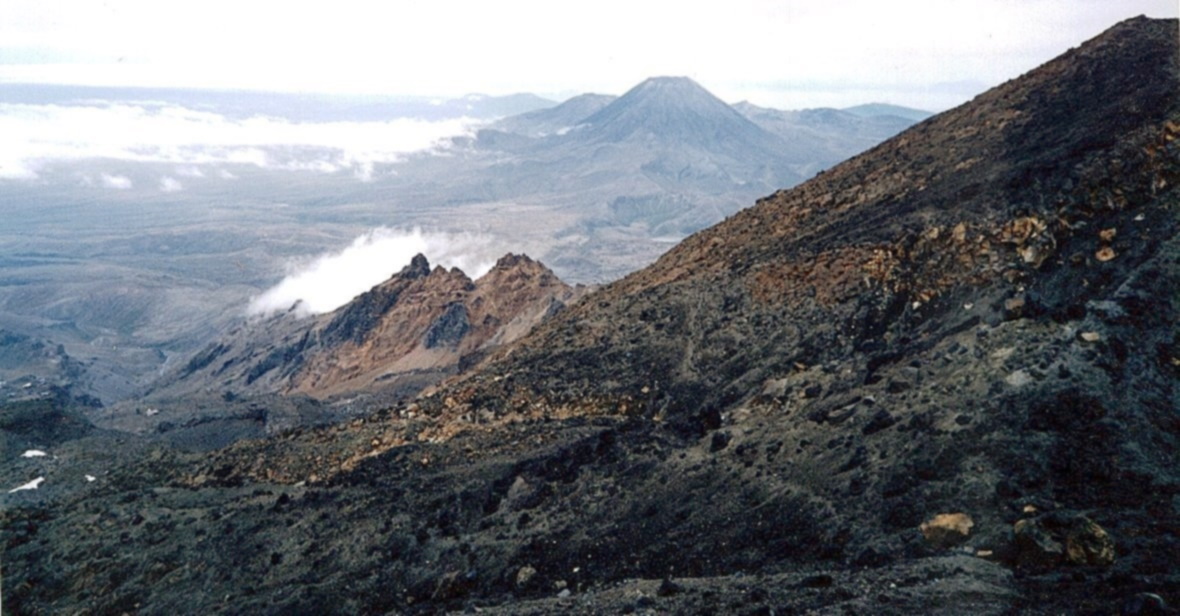 Mt.
Ngauruhoe
on ascent of Ruapehu |
Safely across I scrambled up a short gully to gain the crest of the rocky ridge leading towards the summit. An acrid smell of sulphur wafted up from the crater walls as I clambered along the broken rock of the narrow rim. Coming to an unclimbable, vertical block I was forced to make an awkward traverse around the outside of the volcano on steep, bare rock sprinkled with loose, treacherous scree as effective as ball bearings.
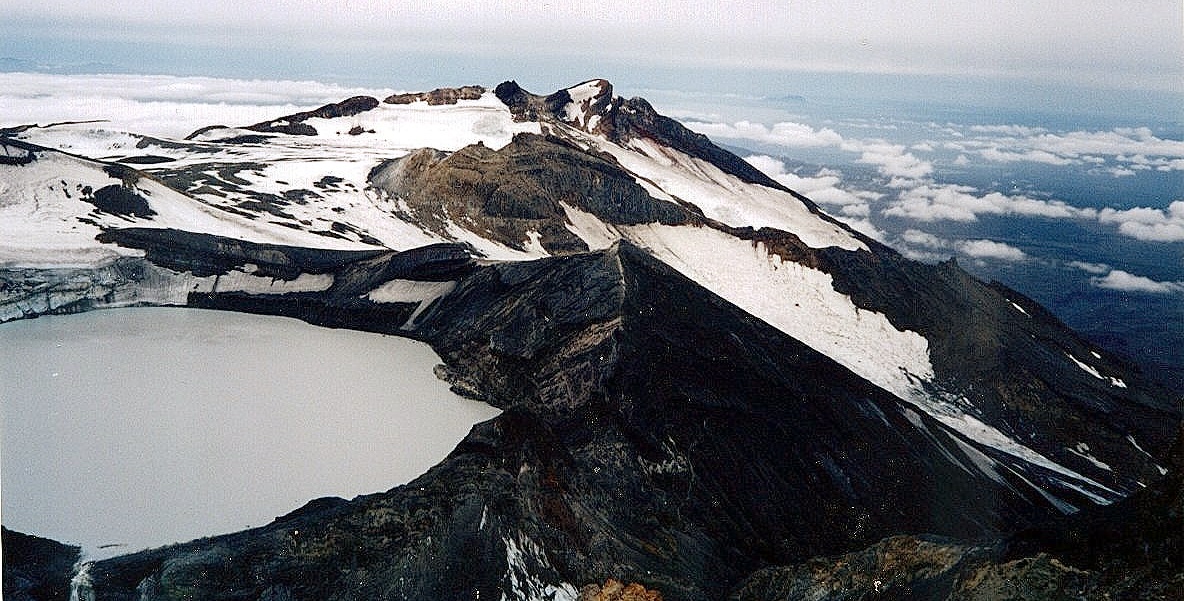 Summit
view
from Mt Ruapehu |
Eventually another gully led back up to a gap in the ridge and a final airy scramble gained the peak of Tehurangi ( c9,000 feet ) to command a fine vantage point over the subordinate summits of the snow-covered roof of the North Island. Thankfully it was to be some time after my ascent that Ruapehu was to cause a major surprise by blowing its top.
References:-
Queenstown: The adventure capital of the world
New Zealand: Denis Heirendt
New Zealand Adventure: Scott Yost
South Island Photo Gallery :: North Island Photo Gallery
Site Index :: Adventure Travel :: Worldwide Mountaineering